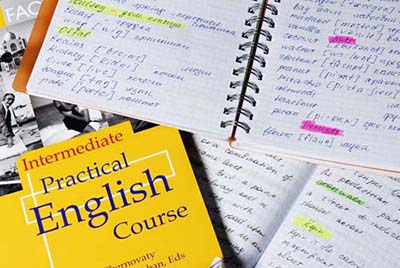英语语法是学习英语的基础,以下是有关英语词类、句子结构、时态、语态、条件句、直接引句与间接引语、定语从句等语法的知识点归纳,供你参考:
1. 词类(Parts of Speech)
名词(Noun):表示人、事物、地点、思想等的词。例如:dog, book, happiness。
代词(Pronoun):代替名词的词。例如:he, she, it, they。
动词(Verb):表示动作或状态的词。例如:run, is, have。
形容词(Adjective):修饰名词或代词的词。例如:big, beautiful, interesting。
副词(Adverb):修饰动词、形容词或其他副词的词。例如:quickly, very, well。
介词(Preposition):表示名词或代词与句中其他部分关系的词。例如:in, on, at。
连词(Conjunction):连接词、短语或句子的词。例如:and, but, because。
感叹词(Interjection):表示情感或感叹的词。例如:oh, wow, ouch。
2. 句子结构(Sentence Structure)
简单句(Simple Sentence):只包含一个独立从句(主语+谓语)。例如:She reads books.
并列句(Compound Sentence):由两个或更多的独立从句用连词连接而成。 例如:I like tea, and he likes coffee.
复合句(Complex Sentence):包含一个独立从句和一个或多个从属从句。 例如:When it rains, I stay home.
并列复合句(Compound-Complex Sentence):包含两个或更多的独立从句和一个或多个从属从句。 例如:She forgot her homework, so she went back home, and then she found it was already too late.
3. 时态(Tenses)
一般现在时(Simple Present Tense):表示习惯性、事实或普遍真理。 例如:She eats breakfast at 7 AM.
现在进行时(Present Continuous Tense):表示现在正在进行的动作。 例如:She is eating breakfast now.
一般过去时(Simple Past Tense):表示过去发生的动作。 例如:She ate breakfast at 7 AM.
过去进行时(Past Continuous Tense):表示过去某一时刻正在进行的动作。 例如:She was eating breakfast at 7 AM yesterday.
一般将来时(Simple Future Tense):表示将来要发生的动作。 例如:She will eat breakfast at 7 AM tomorrow.
现在完成时(Present Perfect Tense):表示过去发生的动作对现在有影响。 例如:She has eaten breakfast already.
过去完成时(Past Perfect Tense):表示在过去某一时刻之前已经完成的动作。 例如:She had eaten breakfast before she went to work.
将来完成时(Future Perfect Tense):表示在将来某一时刻之前将要完成的动作。 例如:She will have eaten breakfast by 7 AM tomorrow.
4. 语态(Voice)
主动语态(Active Voice):主语是动作的执行者。 例如:The cat chased the mouse.
被动语态(Passive Voice):主语是动作的承受者。 例如:The mouse was chased by the cat.
5. 条件句(Conditional Sentences)
零条件句(Zero Conditional):表示恒真或科学事实。 例如:If you heat water, it boils.
第一条件句(First Conditional):表示可能发生的将来情况。 例如:If it rains, we will cancel the picnic.
第二条件句(Second Conditional):表示与现在事实相反的假设情况。 例如:If I were you, I would study harder.
第三条件句(Third Conditional):表示与过去事实相反的假设情况。 例如:If I had known, I would have helped you.
6. 直接引语与间接引语(Direct and Indirect Speech)
直接引语(Direct Speech):直接引用他人说的话。 例如:He said, “I am going to the store.”
间接引语(Indirect Speech):间接引用他人说的话。 例如:He said that he was going to the store.
7. 定语从句(Relative Clauses)
限定性定语从句(Restrictive Relative Clauses):限定修饰的名词,去掉后句意不完整。 例如:The book that is on the table is mine.
非限定性定语从句(Non-restrictive Relative Clauses):补充说明信息,去掉后句意完整。 例如:My brother, who is a doctor, lives in New York.
以上就是英语语法知识点归纳信息!而通过掌握以上语法知识点,可以更好地理解和使用英语。建议在学习过程中多加练习,并结合实际应用来巩固这些知识点。














